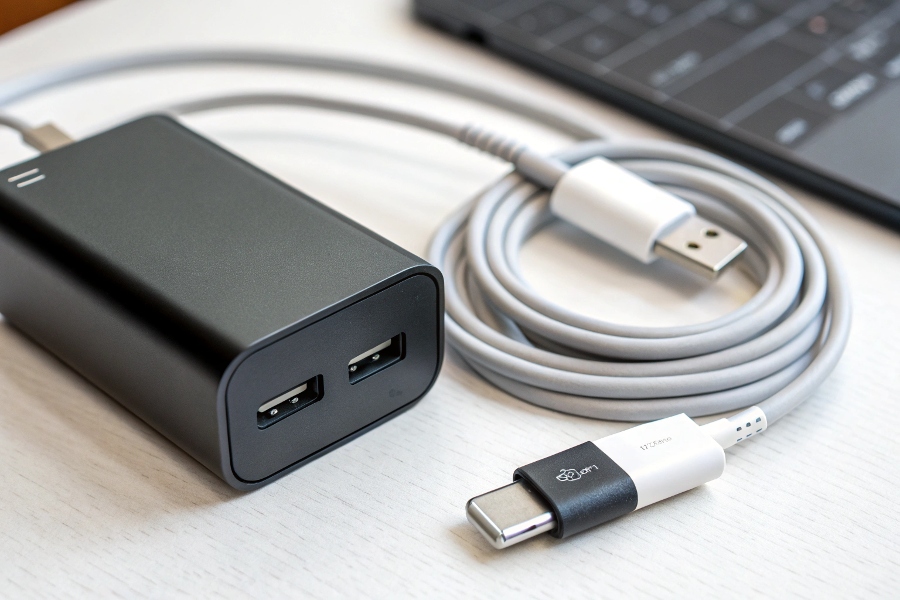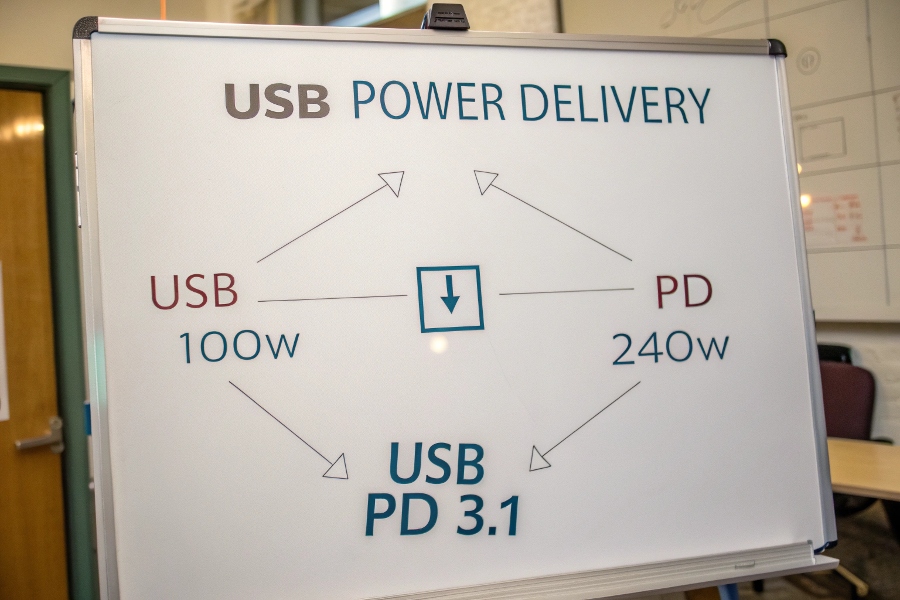Ever looked at your phone, laptop, and tablet and realized they all have different chargers? It’s annoying, isn’t it? What’s the deal with USB-C chargers?
A USB-C charger is a power adapter that uses a USB-C connector to charge devices. It’s known for its versatility, faster charging speeds1, and ability to carry both power and data.

I remember when I first saw USB-C start to appear on devices. I was excited because it seemed like a solution to the mess of different chargers I had. Now, let’s dive deeper into what makes USB-C chargers2 so special.
What Makes USB-C Different from Other USB Types?
We’ve had USB for years, so what’s so different about USB-C? It’s more than just a new shape.
USB-C differs from older USB types (like USB-A and USB-B) primarily in its connector shape, reversible design, and ability to support higher power delivery and data transfer speeds.

Let’s break it down simply. Shape: USB-C has a smaller, oval-shaped connector. Unlike the older USB-A, it’s reversible, meaning you can plug it in either way up. No more fumbling! Speed: USB-C supports much faster data transfer speeds. It can handle protocols like USB 3.1, USB 3.2, and even Thunderbolt 3 or 4, allowing for speeds of up to 40 Gbps. This is a huge jump from the older USB standards. Power: USB-C can deliver more power than previous USB types. USB Power Delivery (USB PD)3 allows USB-C ports to deliver up to 100W (and potentially up to 240W with the latest PD 3.1 standard). This means it can charge not just phones and tablets but also laptops and even some monitors. Versatility: USB-C is not just for charging. It can also transmit video and audio signals. This allows you to connect your laptop to a monitor, use a USB-C headset, or even connect to a USB-C hub to expand your connectivity. Backward Compatibility: While USB-C is a different connector, you can still use adapters to connect older USB devices to a USB-C port. This helps in the transition to the new standard. In summary, USB-C is a significant upgrade over older USB types, offering faster speeds, more power, greater versatility, and a more convenient design.
What is USB Power Delivery (USB PD)?
You’ve probably seen "USB PD" on chargers. What does that actually mean?
USB Power Delivery (USB PD) is a fast-charging technology associated with USB-C that allows devices to receive more power over a USB connection, enabling faster charging times and the ability to charge larger devices like laptops.

USB PD is a game-changer because it allows a single charger to power a wide range of devices. Here’s how it works. Higher Wattage: Unlike standard USB charging, which is limited to 2.5W (5V at 0.5A), USB PD can deliver up to 100W (and potentially 240W with the latest PD 3.1 standard). This higher wattage is what allows it to charge larger devices like laptops and power-hungry tablets. Negotiation: USB PD-enabled devices and chargers "negotiate" the optimal voltage and current levels. The device tells the charger how much power it needs, and the charger provides it, up to its maximum capability. This ensures efficient and safe charging. Bidirectional Power: USB PD can also work bidirectionally, meaning a device can both receive and provide power. For example, a laptop could charge a phone, or a portable power bank could charge both a laptop and a phone. Programmable Power Supply (PPS): PPS is an extension of USB PD that allows for even finer-grained control over voltage and current. This can result in even more efficient charging and reduced heat generation. Safety Features: USB PD includes safety features to prevent overcharging, overheating, and other potential issues. It monitors the charging process and adjusts the power delivery as needed to protect both the device and the charger. To take advantage of USB PD, you need both a USB PD-enabled charger and a USB PD-compatible device. The device will only draw the power it needs, so it’s safe to use a higher-wattage charger with a lower-wattage device.
Are All USB-C Chargers the Same?
Just because a charger has a USB-C port doesn’t mean it’s the same as another. Let’s clear up the confusion.
No, not all USB-C chargers are the same. They can differ significantly in terms of power output, supported charging protocols, and overall quality.

Here’s what you need to know. Wattage: USB-C chargers come in a range of wattages, from as low as 5W to as high as 100W (or even 240W with the latest USB PD 3.1 standard). The wattage determines how quickly a charger can charge a device. A phone might only need a 15W or 20W charger, while a laptop might require 45W, 60W, or even 90W or more. Charging Protocols: Not all USB-C chargers support USB Power Delivery (USB PD). Some may only support basic charging or other proprietary charging protocols like Quick Charge. If you want to take advantage of fast charging, you need a charger that supports USB PD. Build Quality: The quality of components and construction can vary widely among USB-C chargers. A high-quality charger will be more durable, reliable, and less likely to overheat or cause damage to your devices. Safety Certifications: Look for chargers that have been certified by reputable organizations like UL, CE, or FCC. These certifications indicate that the charger has met certain safety standards. Cable Quality: The USB-C cable itself can also affect charging performance. A low-quality cable may not be able to handle the power output of a high-wattage charger, leading to slower charging or even damage. Look for cables that are rated for the wattage of your charger. Brand Reputation: Stick to reputable brands that have a track record of producing high-quality chargers. Avoid cheap, no-name chargers, as they may not meet safety standards or deliver the advertised power output. In summary, when choosing a USB-C charger, pay attention to the wattage, supported charging protocols, build quality, safety certifications, and cable quality.
Conclusion
USB-C chargers are a big step forward. They offer faster charging, more versatility, and a more convenient design. Just remember to choose the right one for your needs!
-
Faster charging speeds can significantly enhance your device usage experience. Discover the advantages of USB-C charging technology. ↩
-
Choosing the right USB-C charger is essential for device safety and performance. Learn more about what to consider before purchasing. ↩
-
Understanding USB PD is crucial for maximizing charging efficiency and ensuring compatibility with your devices. Explore this link for in-depth insights. ↩
